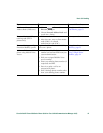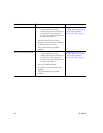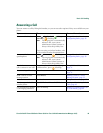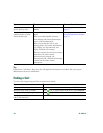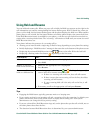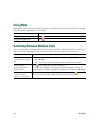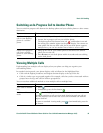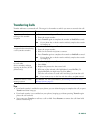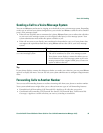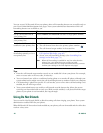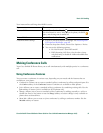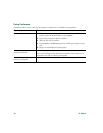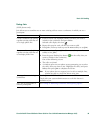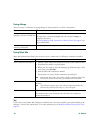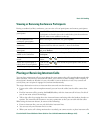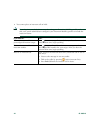
Basic Call Handling
Cisco Unified IP Phone 7970 Series Phone Guide for Cisco Unified Communications Manager 6.1(3) -35
Sending a Call to a Voice Message System
You can use iDivert to send an active, ringing, or on-hold call to your voice message system. Depending
on the type of call and your phone configuration, you can also use iDivert to send the call to another
party's voice message system.
• If the call was originally sent to someone else's phone, iDivert allows you to redirect the call either
to your own voice message system or to the original called party’s voice message system. Your
system administrator must make this option available to you.
• If the call was sent to you directly (not transferred or forwarded to you), or if your phone does
not support the option described above, using iDivert redirects the call to your voice message
system.
Tip
If your phone displays a menu that disappears before you make your selection, you can press iDivert
again to re-display the menu. You can also ask your system administrator to configure a longer timeout
value.
Forwarding Calls to Another Number
You can use call forwarding features to redirect incoming calls from your phone to another number.
Your system administrator might allow you to choose from two types of call forwarding features:
• Unconditional call forwarding (Call Forward All)—Applies to all calls that you receive.
• Conditional call forwarding (Call Forward No Answer, Call Forward Busy, Call Forward No
Coverage)—Applies to certain calls that you receive, according to conditions.
If you want to... Then...
Send an active, ringing, or on-hold call
to a voice message system
Press iDivert. One of two things occurs:
• The call is transferred to your voice message system.
• Your phone screen displays a menu that allows you to
choose between your voice message system or the voice
message system of the original called party. Choose an
option to redirect the call.



